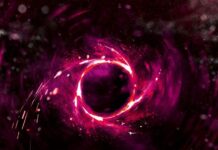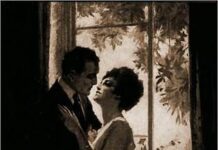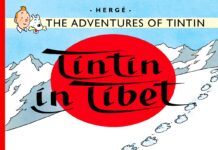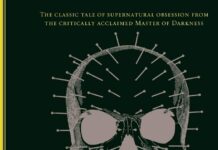In the vast landscape of contemporary literature, few works challenge our perceptions of history and narrative as deftly as Don DeLillo’s Libra. Nestled firmly between fact and fiction, the novel invites readers to navigate the blurred lines where truth becomes elusive and stories intertwine with reality. embarks on an insightful journey through this complex terrain,exploring how delillo reconstructs a pivotal moment in American history with both meticulous research and imaginative flair.This review aims to unpack the layers of the book’s intricate narrative, examining how it provokes reflection on the nature of truth in storytelling without veering toward judgment or bias.
Exploring the Intricate Blend of Historical Fact and Fiction in Libra’s Narrative Fabric

DeLillo’s narrative deftly intertwines painstakingly researched history with imaginative reconstruction, creating a tapestry where fact and fiction blur into one another. this layering not only challenges readers to discern truth from narrative artifice but also highlights the constructed nature of historical memory. Characters like Lee Harvey Oswald are portrayed with a complexity that goes beyond the records, infusing their motives and inner worlds with speculative psychology. Through this interplay, DeLillo invites a reflection on how historical events are not merely past occurrences but evolving stories shaped by perception and interpretation.
Within the novel, certain elements stand out as pivotal in this fusion of reality and invention:
- Detailed setting descriptions that anchor fictional scenes in authentic historical contexts.
- multiple perspectives that present competing versions of key events, emphasizing ambiguity.
- Symbolism and metaphor woven into character arcs to evoke broader cultural and political undercurrents.
| Historical Element | Fictional Interpretation |
|---|---|
| Oswald’s biography | Psychological motivations explored |
| 1960s political climate | Thematic backdrop & tension |
| Assassination details | Alternating perspectives & conspiracy theories |
Unraveling the Complex Psychological Portraits That Drive the Story’s Emotional Core

At the heart of Don DeLillo’s Libra lies a mosaic of characters whose psychological depth transcends mere narrative function. Each figure is crafted with an eye toward complexity,embodying contradictions and ambiguous motivations that challenge readers to reconsider simplistic interpretations of history. DeLillo’s portrayal of Lee Harvey Oswald, as an example, delves beyond the infamous assassin’s surface, exploring his fragmented identity and inner turmoil through a blend of fact and speculative introspection. This creates a tension between certainty and doubt, making the emotional resonance of the story all the more compelling.
These intricate character studies are supported by a rich interplay of themes such as power, vulnerability, and fatalism, which ripple through the novel’s key moments. The characters’ psychological profiles are not static but dynamic, influencing and being influenced by the unfolding conspiracy and shifting allegiances. Consider the following traits that define the novel’s main personas:
- uncertainty: reflects the pervasive doubt that haunts personal and political realms.
- Isolation: Highlights their emotional estrangement despite proximity to epic events.
- Moral Ambiguity: Undermines clear-cut distinctions between heroism and villainy.
- Internal Conflict: Drives their enigmatic choices and ultimate destinies.
| Character | Dominant Trait | Impact on Plot |
|---|---|---|
| lee Harvey Oswald | Fragmented Identity | Central Actor with Ambiguous Motives |
| Agent Angleton | Paranoia | Fuel for Conspiracy Layering |
| Marina Oswald | Emotional Isolation | Emblem of Vulnerability |
The Impact of DeLillo’s Prose Style on the Reader’s Engagement and Interpretation

DeLillo’s prose in Libra intricately weaves a tapestry where language itself becomes a labyrinth, inviting readers into a realm where facts and fabrications blur.His purposeful pacing and fragmented narrative style demand active participation, urging readers not merely to consume but to interpret, question, and reconstruct the story’s mosaic. This approach cultivates a layered engagement, where every sentence carries weight, and every pause teases hidden meanings. The subtle interlacing of historical detail with speculative insights creates a unique tension,challenging traditional perceptions of truth and compelling readers to grapple with ambiguity.
Key elements of DeLillo’s prose contributing to reader engagement include:
- Repetitive motifs: Echoes of recurring imagery and phrases deepen thematic resonance.
- Elliptical dialog: Snippets of speech that reveal character psyche without full exposition.
- Streamlined descriptions: Minimalist yet evocative language that opens emotional space.
| prose Feature | Effect on Reader | Interpretative Outcome |
|---|---|---|
| Fragmented Narrative | Creates suspense and encourages active reconstruction | Engages readers in piecing together multiple perspectives |
| Historical Juxtaposition | blurs line between fact and fiction | Invites critical reflection on narrative reliability |
| Subtle Symbolism | Enhances thematic depth | Encourages layered interpretation |
How Libra Challenges Traditional Concepts of truth in Historical Storytelling

Don DeLillo’s Libra masterfully disrupts the concrete boundaries between fact and fiction, inviting readers to reconsider the very nature of historical truth. Rather than presenting a straightforward recount of the Kennedy assassination, the novel immerses us in a kaleidoscope of perspectives, memories, and speculative interludes that blur the lines of objective reality. This narrative technique reflects the complex, often contradictory truths that underlie major historical events – truths shaped as much by interpretation and bias as by documented facts. By weaving fictionalized inner thoughts and alternative motives into real historical frameworks, DeLillo challenges the reader to question the reliability of accepted narratives and recognize the layers of storytelling embedded within history itself.
In exploring the power dynamics behind knowledge and belief, Libra exposes how history can be molded and contorted, creating a delicate tension between skepticism and credence. Consider the following elements that underscore this tension:
- Multiplicity of viewpoints: The novel portrays a mosaic of conflicting testimonies, highlighting how collective memory is rarely unanimous.
- Psychological depth: By delving into the inner lives of characters, DeLillo emphasizes subjective experience as a key component of “truth.”
- Institutional ambiguity: the opaque roles of government agencies in the plot hint at truth being guarded, manipulated, or obscured.
| Aspect | Traditional Historical Approach | DeLillo’s Narrative Challenge |
|---|---|---|
| truth | Objective and verifiable | Subjective, multifaceted, elusive |
| Storytelling | Linear and factual | Nonlinear, speculative, layered |
| Character Portrayal | historical figures as symbols | Fully rounded, with conflicting motives |
Through these narrative strategies, Libra not only recounts a historic moment but also comments on the epistemological challenges inherent in retelling history – showing us that truth in historical storytelling is often a balancing act between acknowledgment and imagination.
Examining the Ethical Dimensions Explored Through Characters and Plot Developments

Delving into DeLillo’s narrative, the ethical landscape navigated by his characters offers a rich tapestry of moral ambiguity. Each character wrestles with personal responsibility against a backdrop of national paranoia and historical revisionism. For instance, the protagonist’s internal conflict exposes the tension between individual agency and the larger forces of political power, prompting readers to question the limits of loyalty and betrayal. By intertwining fact with fiction,DeLillo challenges us to reconsider the nature of truth itself-how it can be shaped,manipulated,or obscured by those in pursuit of their own agendas.
Throughout the plot, recurring ethical themes emerge, inviting reflection on the following:
- The morality of conspiracy: How far is too far when seeking justice or vengeance?
- The cost of ideological commitment: What personal sacrifices justify a cause?
- The erasure of individual identity: How characters become pawns within larger historical currents.
The following table offers a snapshot of the core ethical dilemmas portrayed, aligned with key characters:
| Character | Ethical Dilemma | Narrative Impact |
|---|---|---|
| Lee Harvey Oswald | Personal agency vs. manipulation | Questions fate and free will |
| Lucien Sarti | Moral ambiguity of violence | Blurs lines between heroism and villainy |
| Narrator | truth vs. narrative construction | Highlights unreliable storytelling |
The Role of Conspiracy Theories and Their Real-World Resonance within the Novel
DeLillo’s narrative intricately weaves conspiracy theories not merely as plot devices but as a reflection of society’s persistent intrigue with hidden truths and shadowy machinations. These theories serve as a mirror to the collective psyche,exposing the lines where skepticism blurs into paranoia. Within the novel, conspiracies become a force that shapes characters’ motivations, distorts historical interpretation, and questions the reliability of official accounts. By doing so, the story transcends fiction, inviting readers to critically assess how such narratives resonate beyond the page-fueling public discourse and influencing perceptions of truth in bewilderingly complex ways.
Consider how DeLillo portrays the impact of these theories through a variety of dimensions:
- Cultural Mistrust: A pervasive skepticism of authority that reflects postmodern anxieties.
- Psychological Impact: Characters grapple with uncertainty, showcasing the emotional toll of living amid unresolved mysteries.
- Historical Ambiguity: The blending of fact and speculation challenges readers to navigate the murky waters between confirmed events and imagined possibilities.
| Aspect | Effect on Characters | real-World Resonance |
|---|---|---|
| Cognitive Dissonance | Internal conflict and doubt | Public mistrust in institutions |
| Information Overload | Difficulty discerning truth | Media’s role in shaping narratives |
| Collective Memory | Fragmented personal histories | Reinterpretation of historical events |
A Closer Look at the Symbolism and Motifs That Enrich the Thematic Layers of Libra
DeLillo masterfully weaves symbolism through the narrative, using objects and recurring images that resonate far beyond their immediate context. The motif of the scales, emblematic of the Libra sign, serves as a constant reminder of the fragile equilibrium between opposing forces-truth and deception, innocence and guilt, history and myth. This balancing act invites readers to question the reliability of narrative and perception itself. The motif of light and shadow further accentuates this duality, not only illuminating the conflicting nature of characters’ motives but also reflecting the broader cultural tensions of Cold War America.
Underlying these symbols is a rich tapestry of motifs that add complexity to DeLillo’s thematic exploration:
- Mirrors and doubles – highlighting identity crises and the elusive search for self.
- Conspiracy theories – portraying the human need for order in chaos and the construction of alternative realities.
- Technological intrusion – symbolizing the mechanization of human experience and the erosion of individual agency.
| Symbol | Representation | Thematic Layer |
|---|---|---|
| Scales | Balance between conflict and resolution | Truth vs. Fiction |
| Mirrors | Reflection of fractured identity | Self and Perception |
| Light/Shadow | Duality of morality and truth | Ambiguity and Uncertainty |
Balancing Suspense and Reflection: Techniques DeLillo Uses to Maintain Narrative Tension
DeLillo artfully navigates the tightrope between suspense and introspection by employing a narrative rhythm that oscillates between high-stakes action and quiet moments of contemplation. The tension is not solely derived from plot twists or external threats but also from the internal struggles of characters as they grapple with fate, morality, and the murky line between truth and myth. Through this duality, DeLillo invites readers to dwell in uncertainty, constantly questioning what is real and what is constructed. His mastery lies in allowing pauses-short, deliberate interludes-that encourage reflection without dissipating the underlying tension that propels the story forward.
Several distinctive techniques underpin this balance, including:
- Fragmented chronology: DeLillo disrupts linear time, weaving past and present to heighten suspense and deepen context simultaneously.
- unreliable perspectives: Characters’ conflicting viewpoints blur the boundary between fact and fiction, fostering a persistent sense of ambiguity.
- Symbolic motifs: recurring images act as subconscious anchors, enriching moments of reflection while maintaining narrative cohesion.
| Technique | Effect on Tension | Example |
|---|---|---|
| Fragmented Chronology | Creates disorientation and suspense | Shifting timelines around JFK’s assassination |
| Unreliable Perspectives | Encourages doubt and reflection | Conflicting narratives from Oswald and other characters |
| Symbolic Motifs | Anchors emotional resonance | Repeated imagery of water and mirrors |
The Cultural and Political Context Surrounding the Story’s Setting and Its Relevance Today
DeLillo’s narrative is deeply woven into the fabric of the Cold War era, a time rife with paranoia, ideological battles, and clandestine operations. The story is set against the backdrop of 1960s America, where trust in government institutions was both a given and a fragile illusion. The assassination of a sitting president is not merely a historical event in this context; it is a reflection of a society grappling with the tension between public certainty and hidden agendas. By exploring characters entangled in espionage, conspiracy, and moral ambiguity, the novel encapsulates the zeitgeist of an age where the personal was inexorably political, and every truth was shrouded in suspicion. This duality challenges readers to reconsider the thin line between fact and fiction that defined-and continues to define-modern political discourse.
Today, the relevance of these themes persists as we navigate a world increasingly saturated with information yet plagued by misinformation. The cultural undercurrents of Libra resonate through contemporary debates on media, surveillance, and public trust.The story’s enduring power lies in its exploration of:
- The construction of historical narratives and whose perspectives dominate them.
- The interplay between individual agency and systemic forces shaping political outcomes.
- The complex relationship between secrecy, power, and democracy.
To visualize this tension, consider the following comparison of the 1960s political atmosphere to today’s climate:
| Aspect | 1960s Context | Contemporary Parallel |
|---|---|---|
| Information Flow | Slow, controlled media narratives | Instant, fragmented social media updates |
| Public Trust | Fragile but hopeful | Highly skeptical and polarized |
| Political Power | Opaque, centralized | Decentralized yet surveilled |
This comparison underscores how Libra remains a potent study of the fragility of truth amidst evolving cultural and political landscapes, urging us to scrutinize both history and present-day realities with equal rigor.
Recommendations for Readers Seeking Thought-Provoking historical Fiction with Philosophical Depth
For readers intrigued by narratives that weave historical events with philosophical inquiry, Delillo’s Libra offers a masterclass in balancing meticulous research with imaginative storytelling. Exploring the murky intersection of fact and conjecture,the novel invites readers to question not only the nature of truth but also the mechanics of fate and free will.Those seeking literary journeys where history serves as a canvas for existential reflection will find Delillo’s intricate characterizations and elegant prose especially rewarding. Consider pairing this novel with works that challenge the boundaries of historical perspective to deepen your engagement with the genre:
- The Master and Margarita by Mikhail Bulgakov – a metaphysical twist on Soviet reality.
- austerlitz by W.G. Sebald – an elegiac meditation on memory and history.
- The Name of the Rose by Umberto Eco – intellectually rich historical mystery.
- Foucault’s Pendulum by Umberto Eco – interlacing conspiracy and knowledge.
To further orient your exploration, here is a brief comparison highlighting key philosophical themes alongside their narrative impact:
| Novel | Philosophical Core | Historical Context | Narrative Style |
|---|---|---|---|
| Libra | Fate, Free Will, Truth | Kennedy Assassination | Multiperspectival, Meditative |
| The Master and Margarita | Good vs Evil, Reality | 1930s Soviet Union | Satirical, Magical Realism |
| Austerlitz | Memory, Identity | Post-War Europe | Reflective, Fragmented |
| The Name of the Rose | knowledge, Faith | 14th Century Monastery | Mystery, Philosophical |
Why Libra Remains a Significant Work in Contemporary American Literature
DeLillo’s Libra masterfully interweaves fact and imagination, crafting a narrative that challenges the boundaries between historical record and creative interpretation. The novel doesn’t simply recount the events surrounding the Kennedy assassination; instead,it probes the psychology and motivations of its characters,presenting a nuanced portrait of a troubled era in American culture. This blending of perspectives invites readers to question the nature of truth and the stories we accept as reality, making it a lasting work that resonates deeply in an age dominated by information and misinformation alike.
Beyond its thematic depth, the novel’s structure and character advancement highlight DeLillo’s skill in balancing multiple viewpoints. The multiplicity of voices-from Oswald’s alienation to the shadowy conspirators-provides a kaleidoscopic view of history, revealing its complexity rather than offering easy explanations. Key reasons for its enduring relevance include:
- Psychological exploration: A vivid portrayal of a fragmented mind caught between fate and agency.
- Political ambiguity: An open-ended narrative that refuses to settle on a single truth.
- Cultural reflection: A mirror to America’s turbulent 1960s, echoing contemporary issues.
| Aspect | Significance |
|---|---|
| historical Fusion | Blurred lines between documented fact and fictional narrative enhance reader engagement. |
| Character Complexity | Explores the multifaceted motives behind key figures, avoiding simplistic villainy. |
| Thematic Depth | Explores the nature of conspiracy, identity, and truth in a politically charged landscape. |
Insights into DeLillo’s Influences and literary Evolution Leading to the Creation of Libra
Delving into DeLillo’s journey as a literary craftsman reveals a compelling confluence of cultural observations, historical curiosity, and narrative experimentation that culminated in Libra.Influenced by the turbulent political climate of the 1960s and 70s, DeLillo’s writing evolved to capture the intricate dance between fact and fabrication, truth and myth. His captivation with conspiracy theories, government mistrust, and fragmented identity is palpable in this work. Throughout his earlier novels,elements of paranoia and media critique subtly appeared,but with Libra,these motifs crystallize into a textured exploration of one of america’s most enigmatic moments-the JFK assassination.
Several key influences blend seamlessly in DeLillo’s creative alchemy:
- Postmodern Narrative Techniques: Breaking chronological constraints and mixing perspectives to mirror history’s ambiguity.
- Contemporary Politics: Insights into Cold War tensions that permeate the novel’s atmosphere.
- Historical Reinterpretation: Re-examining established events through fictionalized storytelling, questioning the nature of truth itself.
- Cultural Tensions: The social unrest and ideological conflicts of mid-20th-century America shape character motivations and societal commentary.
| Influence | Impact on Libra |
|---|---|
| Postmodernism | blurring lines between fact & fiction |
| Cold War Politics | Tensions & paranoia atmosphere |
| Historical Revisionism | Reimagined JFK narrative |
| Media Influence | Commentary on information control |
Ultimately, invites readers to step carefully along the blurred lines where history and imagination intertwine. It neither wholly sanctifies nor dismisses DeLillo’s literary choices but instead encourages a reflective engagement with the complexities of narrative truth. For those curious about the alchemy of fact and fiction, this book offers a measured, insightful lens-one that reminds us how stories shape our understanding of reality, even when that reality remains elusive.










